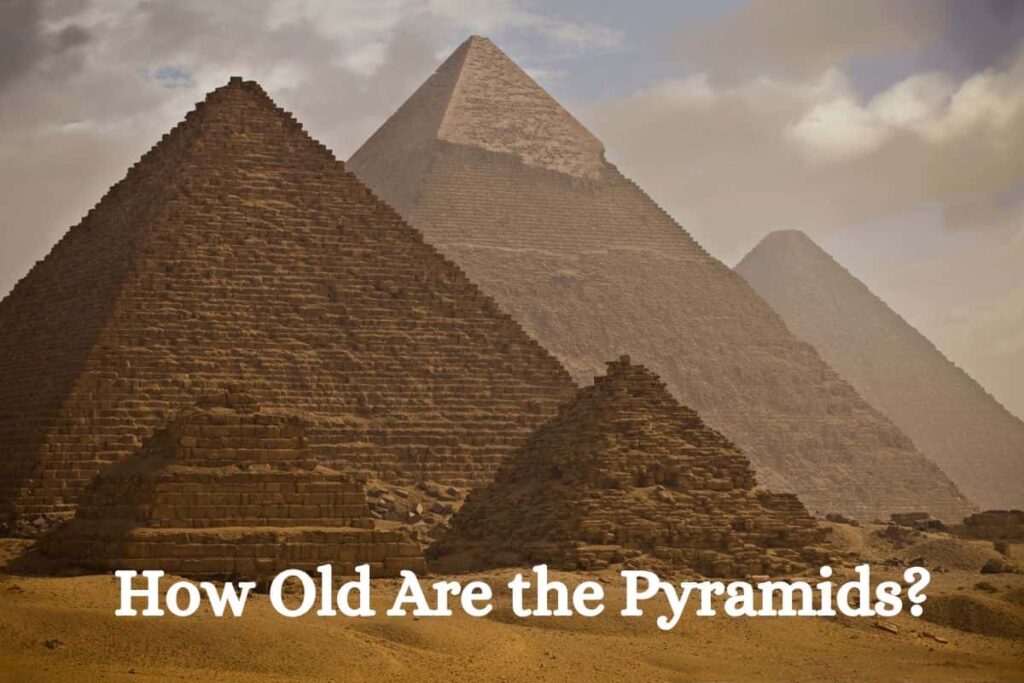Introduction
Welcome to the mystical world of Egyptian pharaohs, where history intertwines with legends, and ancient tales come to life. In this informative journey, we will delve into the enigmatic realm of the land of the pharaohs, exploring the significance, legacy, and famous figures that shaped this extraordinary civilization.
What is a Pharaoh?
A pharaoh, in ancient Egyptian society, was more than just a ruler; they were considered divine figures, the intermediaries between the gods and the people. The title of “pharaoh” originated from the Egyptian word ‘per-aa,’ meaning ‘Great House,’ symbolizing the royal palace.
These revered leaders governed not only the political landscape but also played a crucial role in religious ceremonies and were believed to possess divine powers. The concept of the pharaoh’s divine connection influenced every aspect of Egyptian life, from daily rituals to monumental construction projects.
The First Pharaoh of Egypt: Inception of a Majestic Legacy
The history of Egyptian pharaohs dates back to the early dynastic period, and the first pharaoh to unite Upper and Lower Egypt was King Narmer, also known as Menes. This unification laid the foundation for a rich and enduring civilization.
King Narmer’s reign marked the establishment of a centralized government, the development of hieroglyphic writing, and the construction of the first monumental structures. As the inaugural pharaoh, Menes set the stage for the grandeur that would define the subsequent eras of Egyptian history.
Famous Egyptian Pharaohs Throughout History

Hatshepsut: The Trailblazing Queen Pharaoh
Hatshepsut, one of the most remarkable pharaohs, defied conventions by ascending to the throne as a female ruler. Her reign marked an era of prosperity and grand architectural projects. Notably, she commissioned the construction of the magnificent temple at Deir el-Bahari, showcasing her commitment to artistic and architectural innovation.
Hatshepsut’s legacy extends beyond her reign, as subsequent pharaohs drew inspiration from her achievements. Her impact on gender roles in ancient Egypt and her architectural contributions solidify her place among the most influential pharaohs.
Ramses II: The Great Builder
Ramses II, often referred to as Ramses the Great, was a prolific builder and military leader. His legacy is etched in colossal statues and the famous temples at Abu Simbel. As one of the longest-reigning pharaohs, Ramses II left an indelible mark on the landscape of ancient Egypt.
The temples of Abu Simbel, dedicated to Ramses II and his queen Nefertari, stand as a testament to his architectural prowess and political achievements. The colossal statues guarding the entrance reflect the grandeur and power of this iconic pharaoh.
Tutankhamun: The Boy King
Tutankhamun, though his reign was short-lived, became a global sensation when his tomb was discovered in the Valley of the Kings. His treasures unveiled the opulence of ancient Egyptian royalty. Despite his brief rule, Tutankhamun’s burial mask and golden artifacts have become synonymous with the wealth and artistry of the pharaonic period.
The discovery of Tutankhamun’s tomb by Howard Carter in 1922 provided unprecedented insights into the funerary practices and beliefs surrounding the afterlife. The meticulous preservation of the young pharaoh’s burial chamber offered a glimpse into the religious and cultural significance attached to death in ancient Egypt.
The Land of the Pharaohs: Exploring Ancient Egypt
The phrase “Land of the Pharaohs” evokes images of majestic pyramids, the Sphinx, and the bustling city of Thebes. Ancient Egypt’s geography, with the Nile River at its heart, played a crucial role in the prosperity of this civilization.
The fertile Nile Delta and the annual flooding of the river facilitated agriculture, providing sustenance for a burgeoning population. The strategic location of the Nile also enabled trade and cultural exchange with neighboring regions, contributing to the richness of Egyptian civilization.
Pharaohs’ Legacy – Architectural Marvels and Cultural Impact
The architectural prowess of Egyptian pharaohs is evident in the pyramids of Giza, the Sphinx, and the temples dedicated to various gods. Their cultural impact extended to art, literature, and religious practices that continue to captivate the world.
The Pyramids of Giza

The Pyramids of Giza, built during the Fourth Dynasty, stand as the most iconic structures of ancient Egypt. Commissioned as elaborate tombs for pharaohs, these monumental pyramids showcase the advanced engineering skills of the ancient Egyptians.
The Great Pyramid of Khufu, the Pyramid of Khafre, and the Pyramid of Menkaure are marvels of precision construction. Theories abound regarding the techniques employed in their construction, ranging from the use of ramps to intricate pulley systems. The mystery surrounding the building process adds to the allure of these architectural wonders.
The Sphinx: Guardian of the Pyramids

Adjacent to the Pyramids of Giza, the Sphinx, with the body of a lion and the head of a pharaoh, stands as a colossal sentinel. Scholars believe that the Sphinx represents Pharaoh Khafre, the builder of the second-largest pyramid at Giza.
The Sphinx’s enigmatic smile and its association with ancient Egyptian mythology add layers of intrigue. The alignment of the Sphinx with the pyramids suggests a symbolic connection, possibly related to solar and funerary beliefs.
Temples of Luxor and Karnak: A Tapestry of Religious Devotion

The temples of Luxor and Karnak, situated on the east bank of the Nile, exemplify the grandeur of pharaonic architecture. Dedicated to the gods Amun-Ra and Mut, these temples served as centers for religious ceremonies and royal rituals.
The Avenue of Sphinxes, connecting Luxor Temple to Karnak Temple, once witnessed grand processions and festivals. The Hypostyle Hall in Karnak, with its towering columns adorned with hieroglyphs, remains an architectural marvel, reflecting the scale of ancient Egyptian religious practices.
Egyptian Pharaohs List
Explore a comprehensive list of Egyptian pharaohs, from the legendary Menes to Cleopatra, each contributing uniquely to the rich tapestry of Egypt’s history.
Menes: The Unifier of Egypt
As the first pharaoh, Menes played a pivotal role in consolidating the two regions of Upper and Lower Egypt. His achievements set the stage for the flourishing civilization that followed.
Akhenaten: The Revolutionary Pharaoh
Akhenaten, also known as Amenhotep IV, is remembered for his attempt to shift the religious landscape by promoting the worship of the sun god Aten. His radical changes, including the construction of a new capital, marked a unique chapter in Egyptian history.
Cleopatra: The Last Pharaoh

Cleopatra, the last pharaoh of Egypt, navigated the complexities of political intrigue and alliances with Rome. Her relationships with Julius Caesar and Mark Antony shaped the fate of Egypt, leading to its eventual annexation by the Roman Empire.
Who Was the Last Pharaoh of Egypt?
Discover the story of Cleopatra, the last pharaoh of Egypt, known for her intelligence, political acumen, and the tragic end to the Ptolemaic dynasty.
Cleopatra’s reign unfolded against the backdrop of a changing world, with the Roman Republic transforming into an empire. Her relationships with influential Roman leaders, including Julius Caesar and Mark Antony, were both politically strategic and personally complex.
The demise of Cleopatra and Mark Antony at the Battle of Actium in 31 BCE marked the end of the Ptolemaic rule and the beginning of Egypt’s integration into the Roman Empire. Despite her ultimate defeat, Cleopatra’s legacy endures as a symbol of resilience and diplomacy.
Pharaoh Facts
Uncover intriguing facts about pharaohs, including their religious beliefs, burial practices, and the significance of the afterlife in Egyptian culture.
Divine Authority – Pharaohs as Living Gods
The divine status of pharaohs permeated every aspect of ancient Egyptian society. From their role in religious ceremonies to their influence on daily life, pharaohs were considered the earthly embodiment of gods.
The Afterlife Obsession – Elaborate Burial Practices
The concept of the afterlife held immense significance for pharaohs, leading to elaborate burial practices. Pyramids served as monumental tombs, filled with treasures and artifacts believed to accompany the pharaoh in the afterlife.
The Book of the Dead – Guide to the Afterlife
The Book of the Dead, a collection of spells and rituals, played a crucial role in guiding the deceased through the perilous journey of the afterlife. Pharaohs and elites commissioned personalized copies, emphasizing their desire for a safe passage to the realm of the gods.
FAQs
Q1: What is the role of a pharaoh in ancient Egypt?
A1: Pharaohs were not just political leaders; they held a divine status, serving as intermediaries between the gods and the people.
Q2: Who was the most famous Egyptian pharaoh?
A2: Tutankhamun gained global fame due to the discovery of his well-preserved tomb and treasures.
Q3: What is the legacy of Egyptian pharaohs?
A3: The legacy includes monumental architectural structures, cultural influences, and a profound impact on art and religion.
Conclusion
Embark on this fascinating journey through the annals of history, as we unravel the mysteries surrounding Egyptian pharaohs. From the first pharaoh who united the lands to the last queen who faced the might of Rome, the legacy of these extraordinary rulers endures, leaving an indelible mark on the sands of time. As we gaze upon the remnants of their civilization, we can’t help but marvel at the greatness of the land of the pharaohs.



